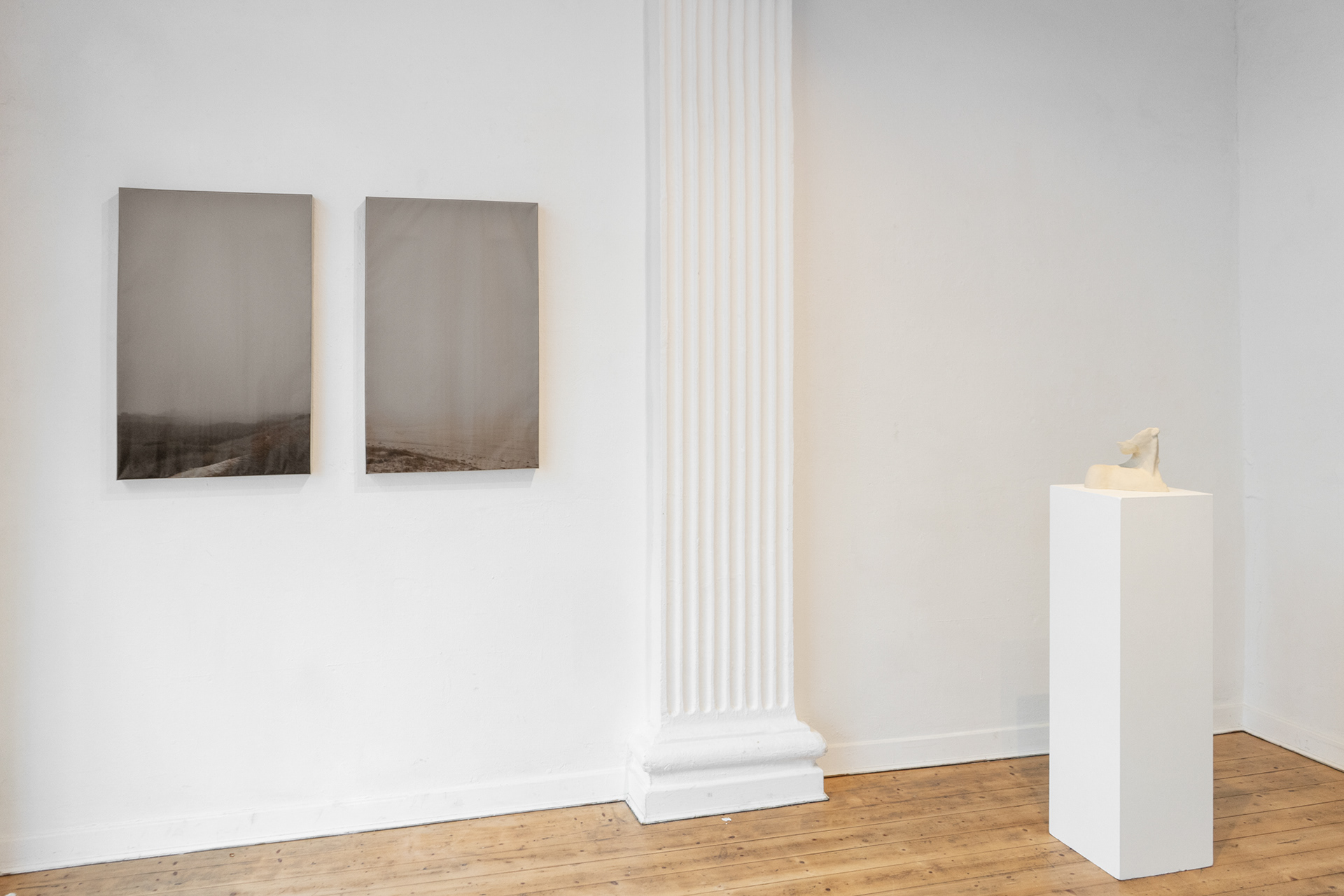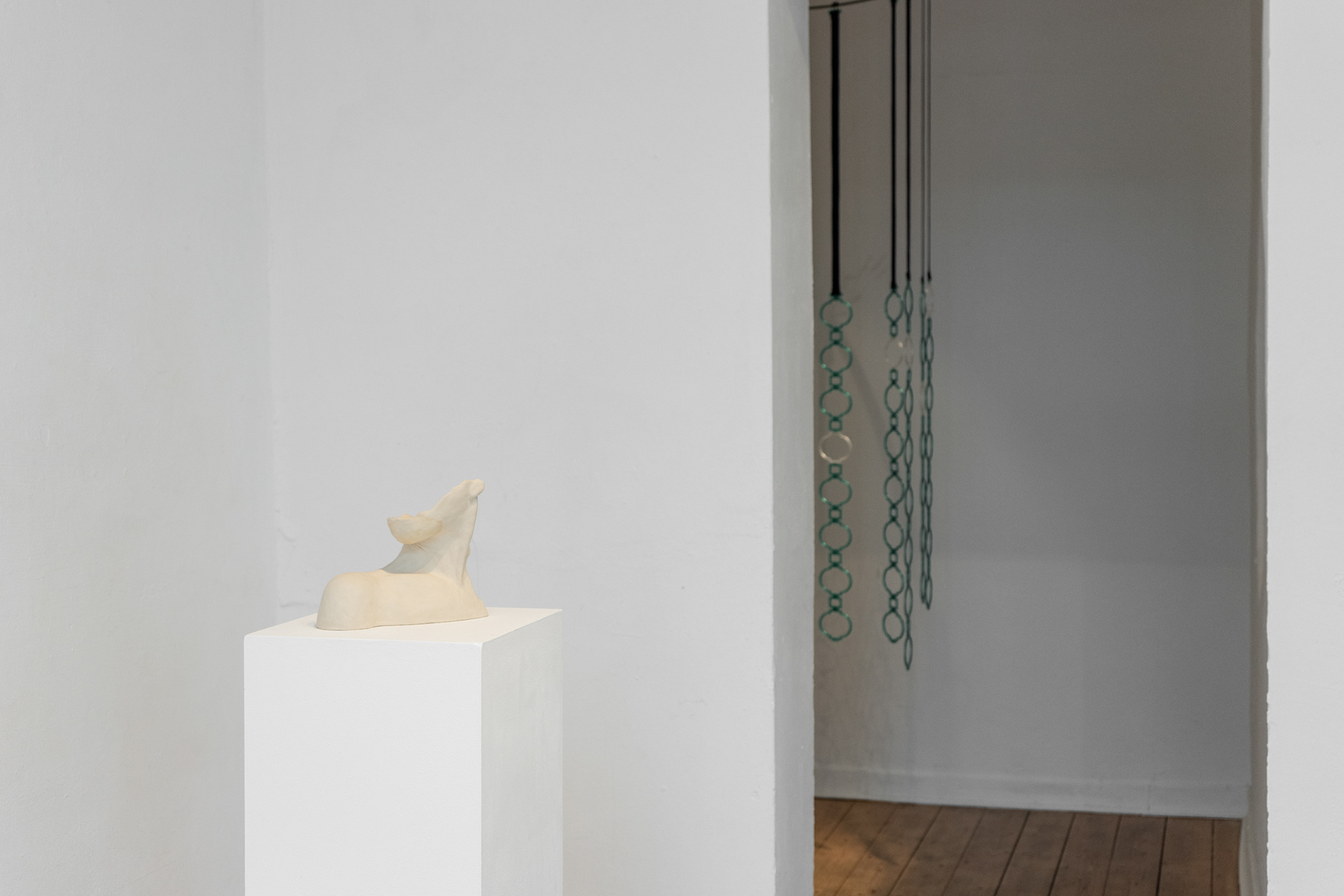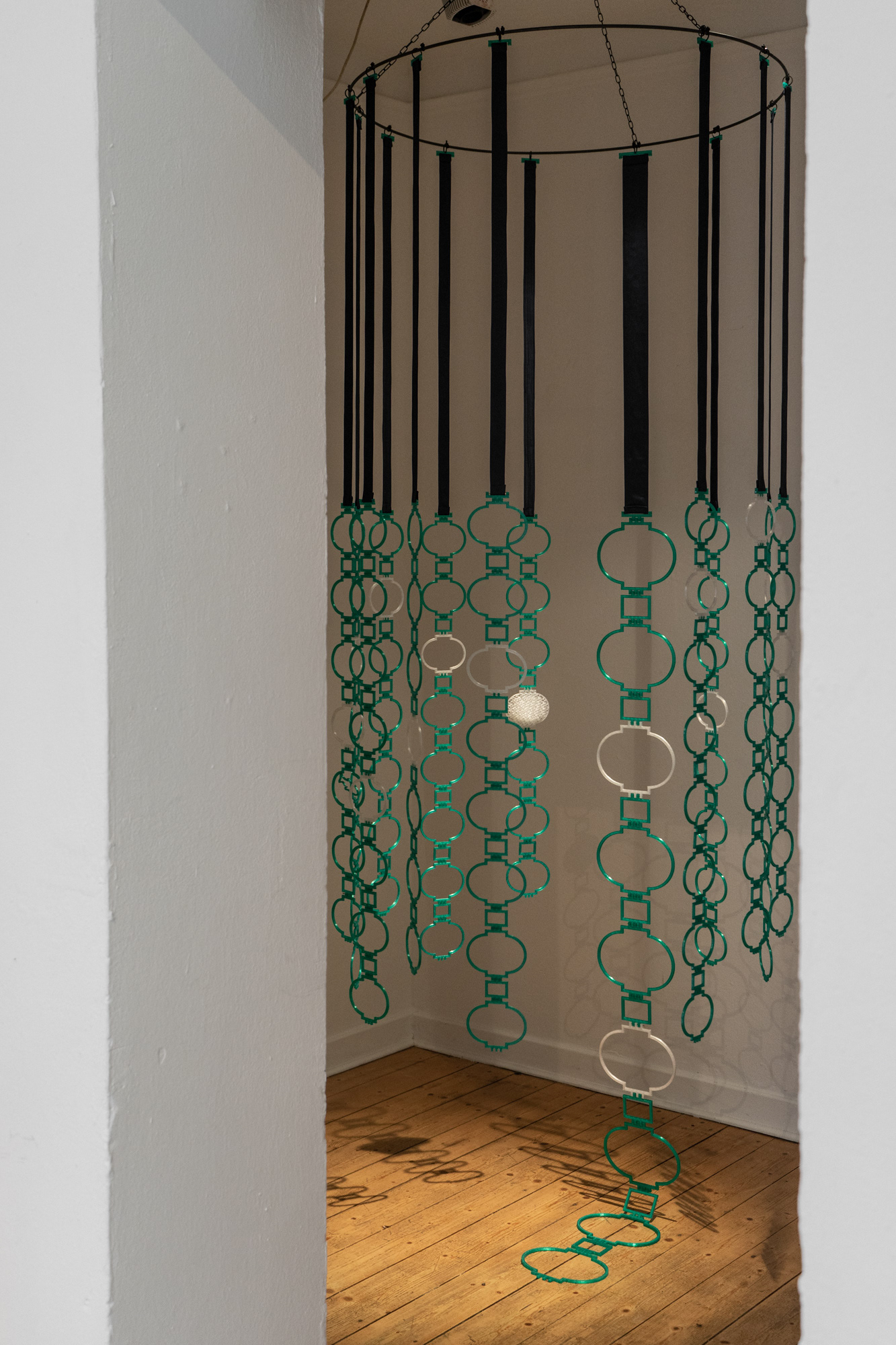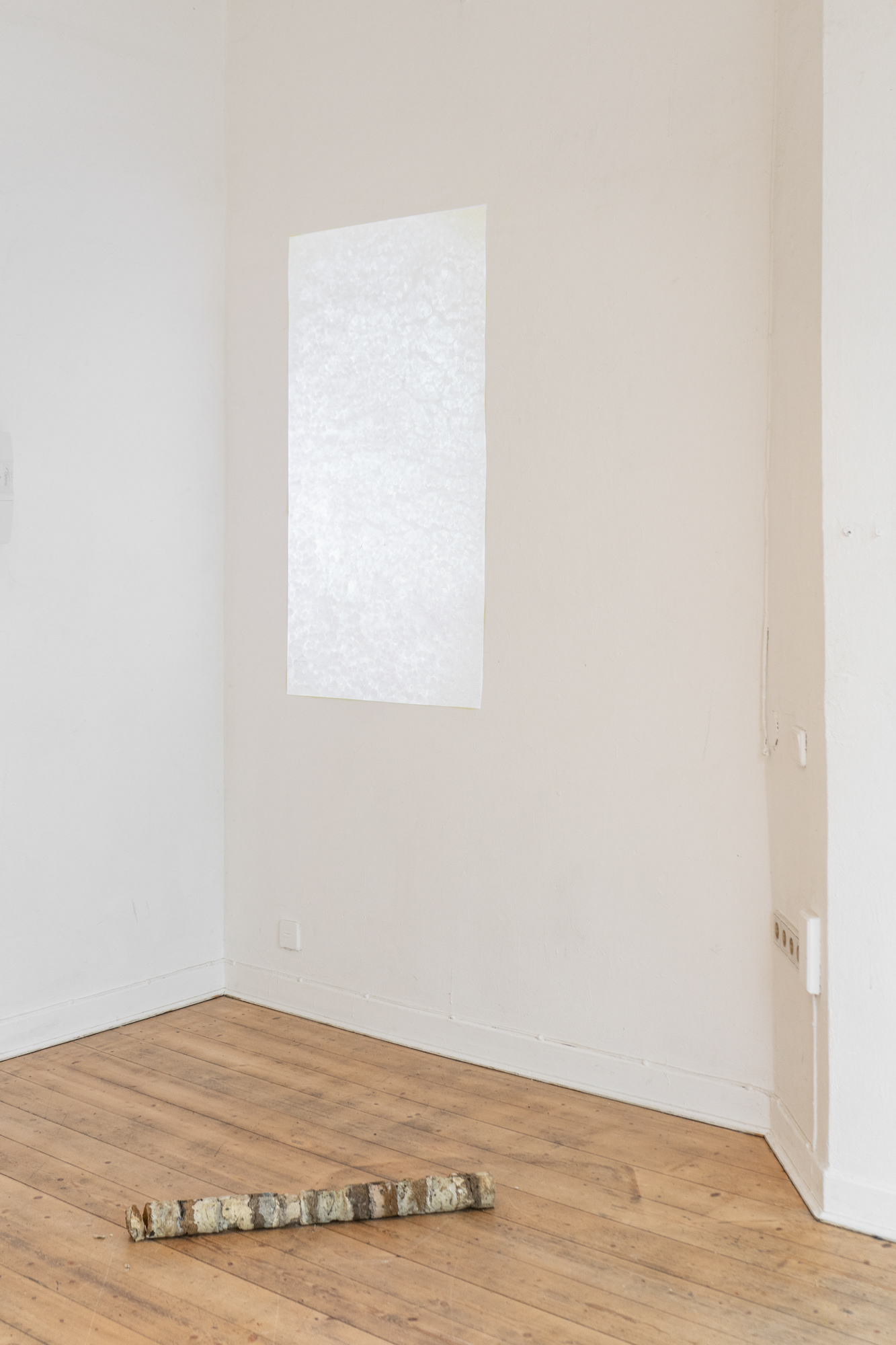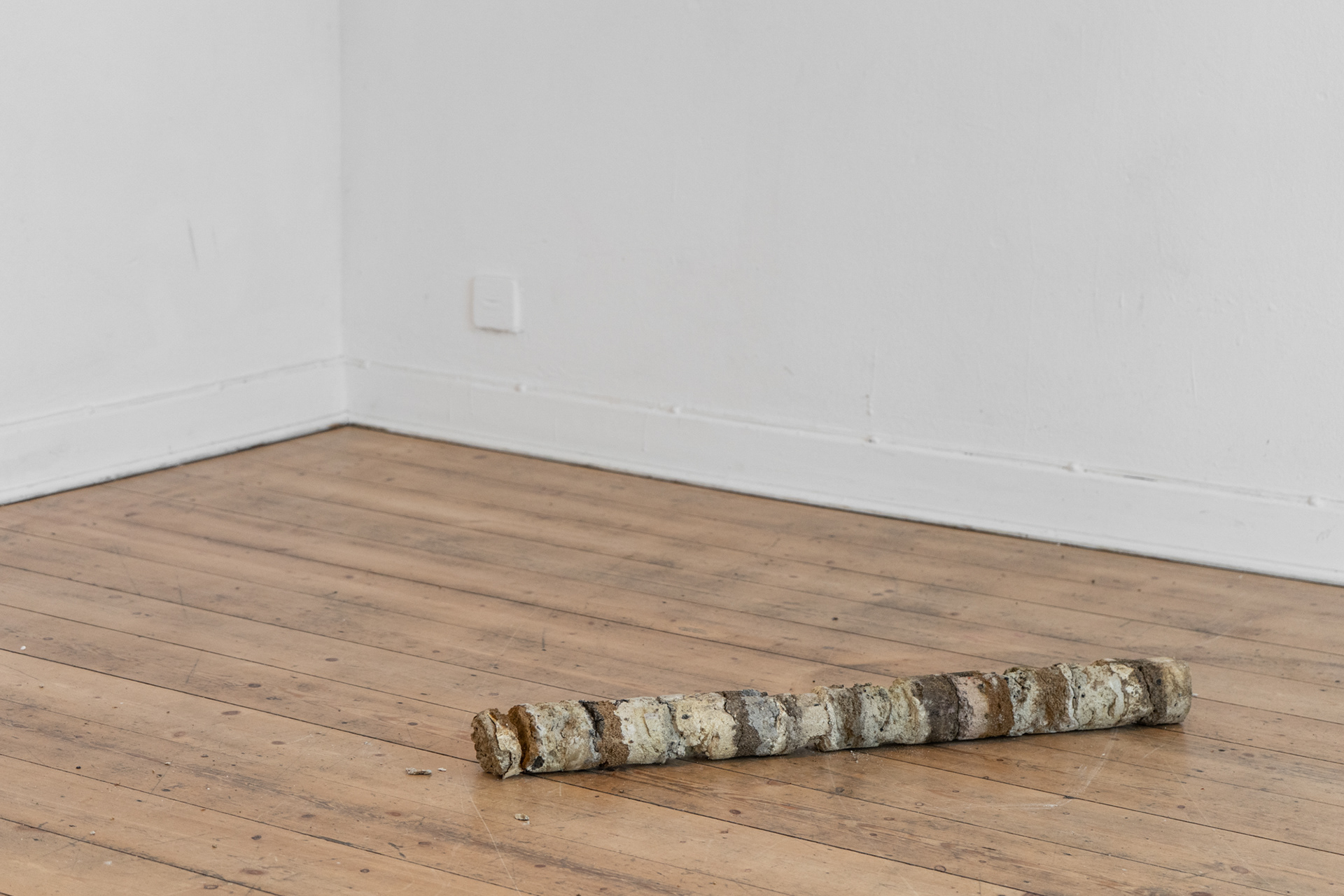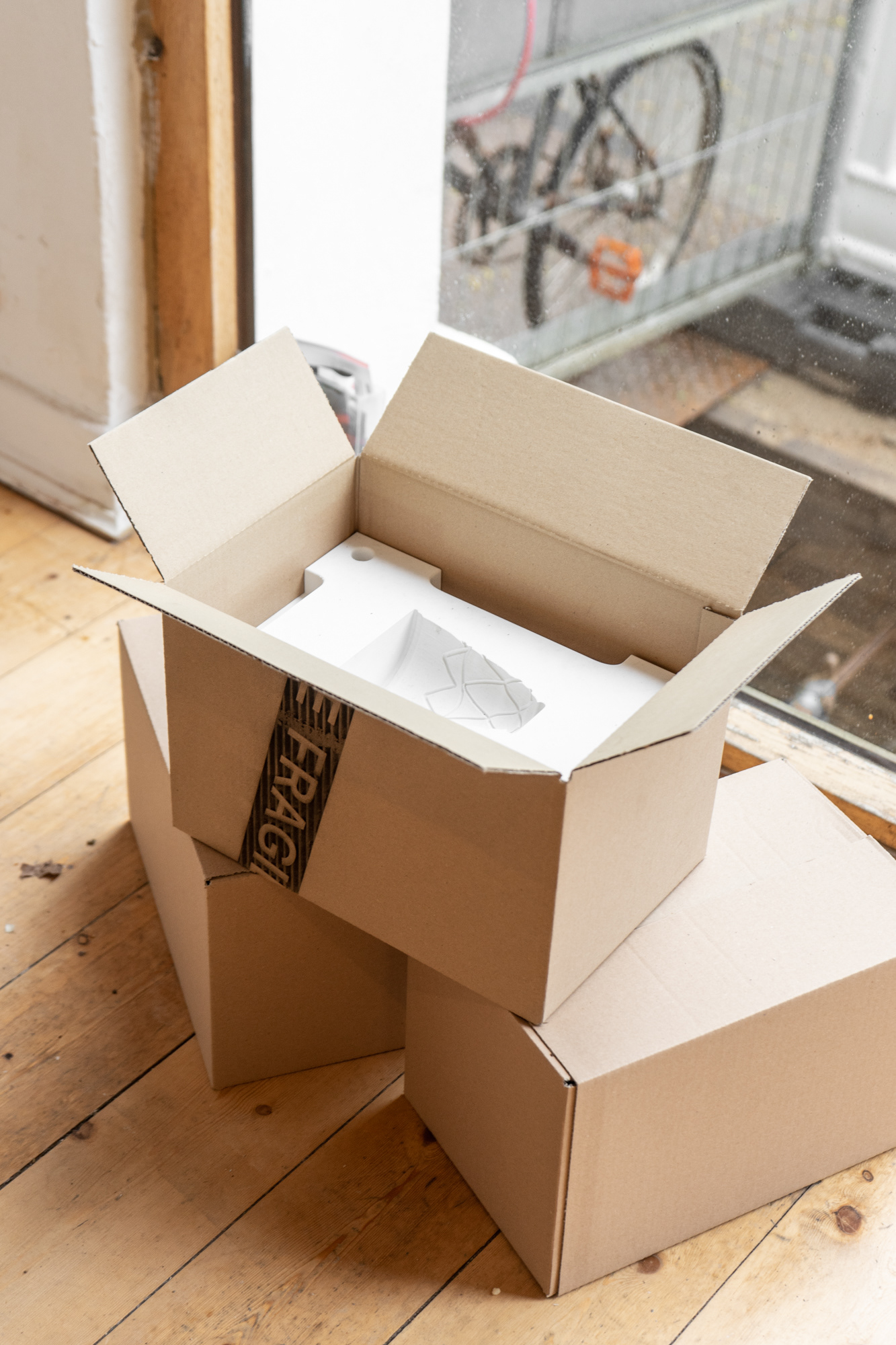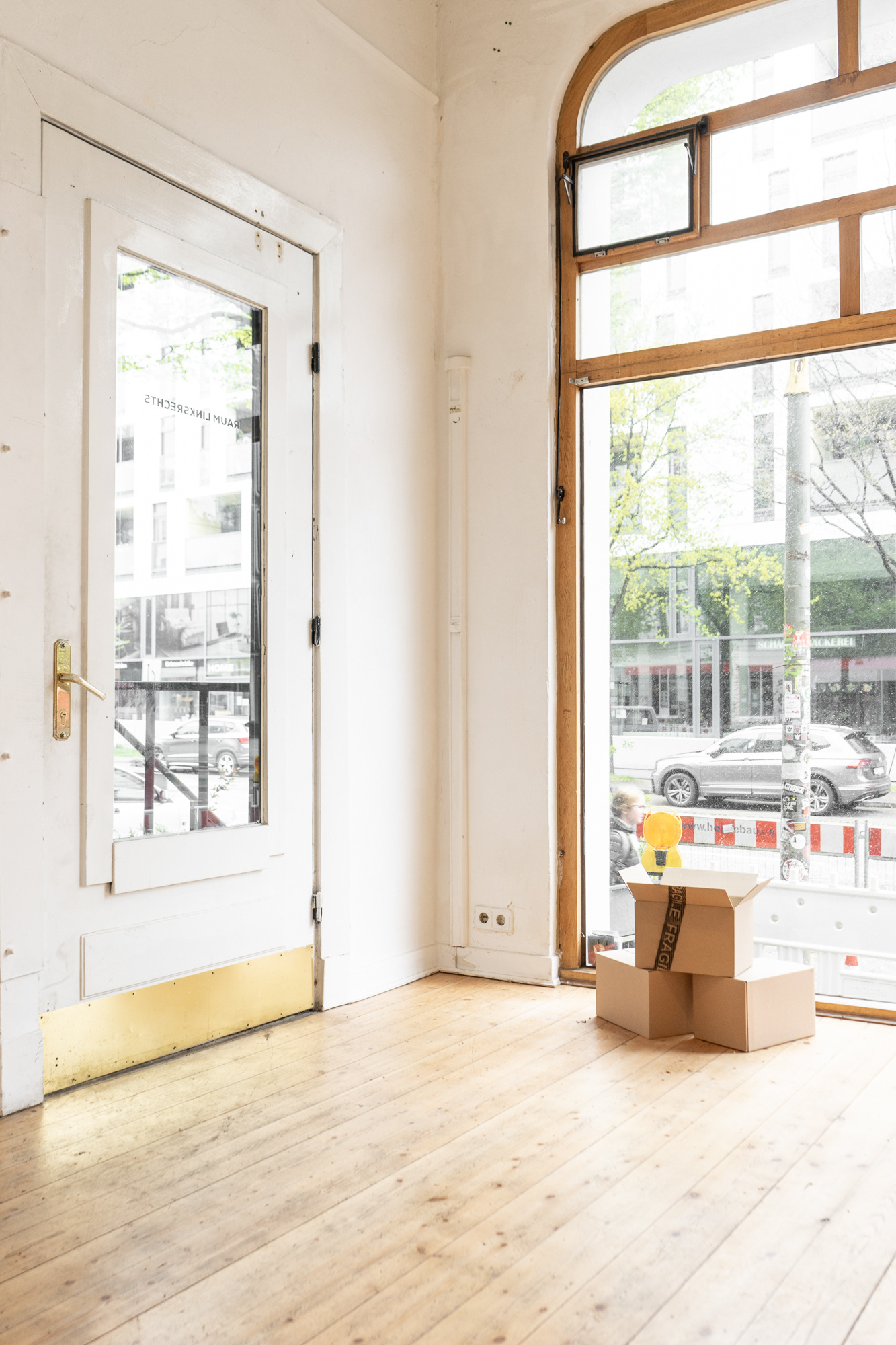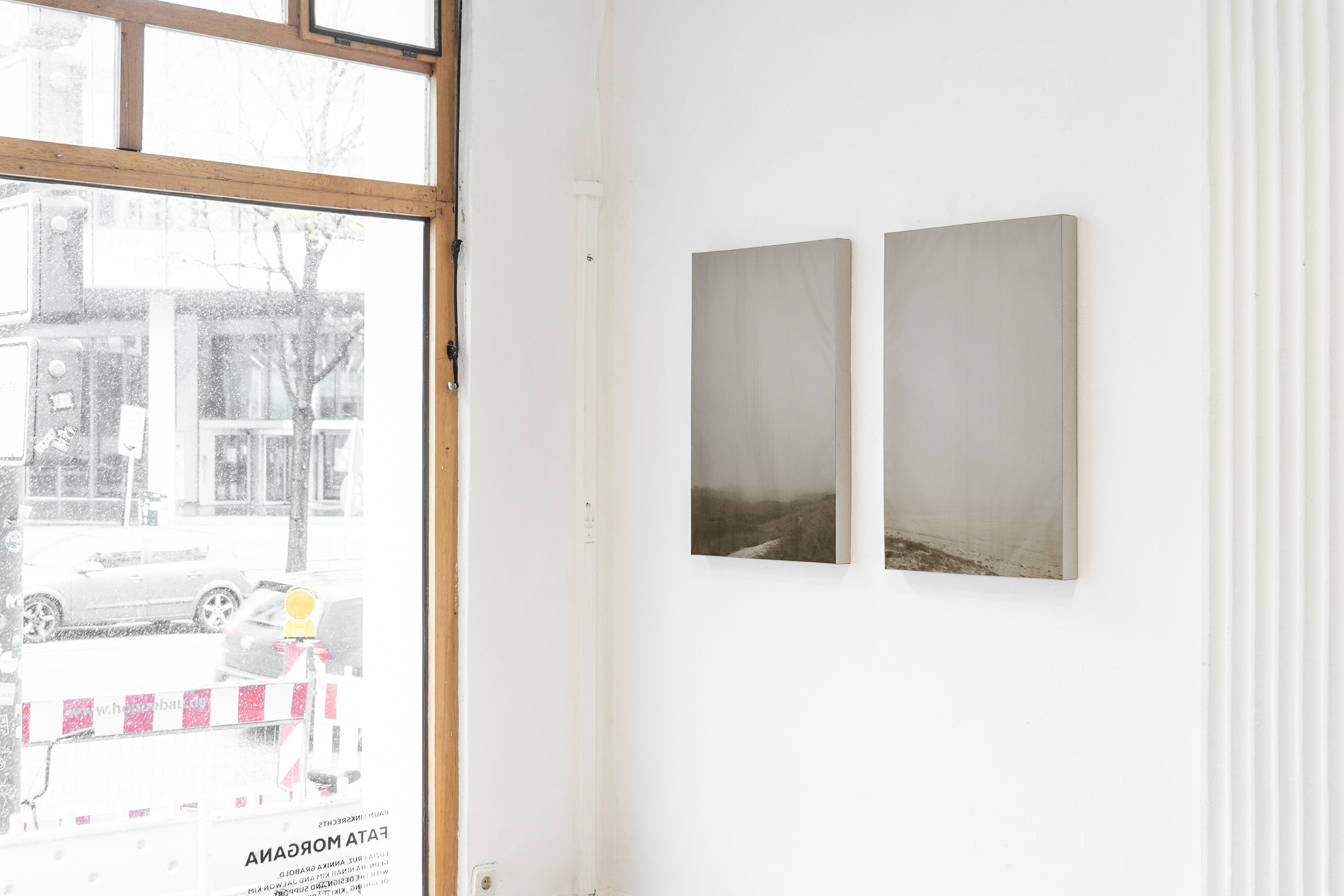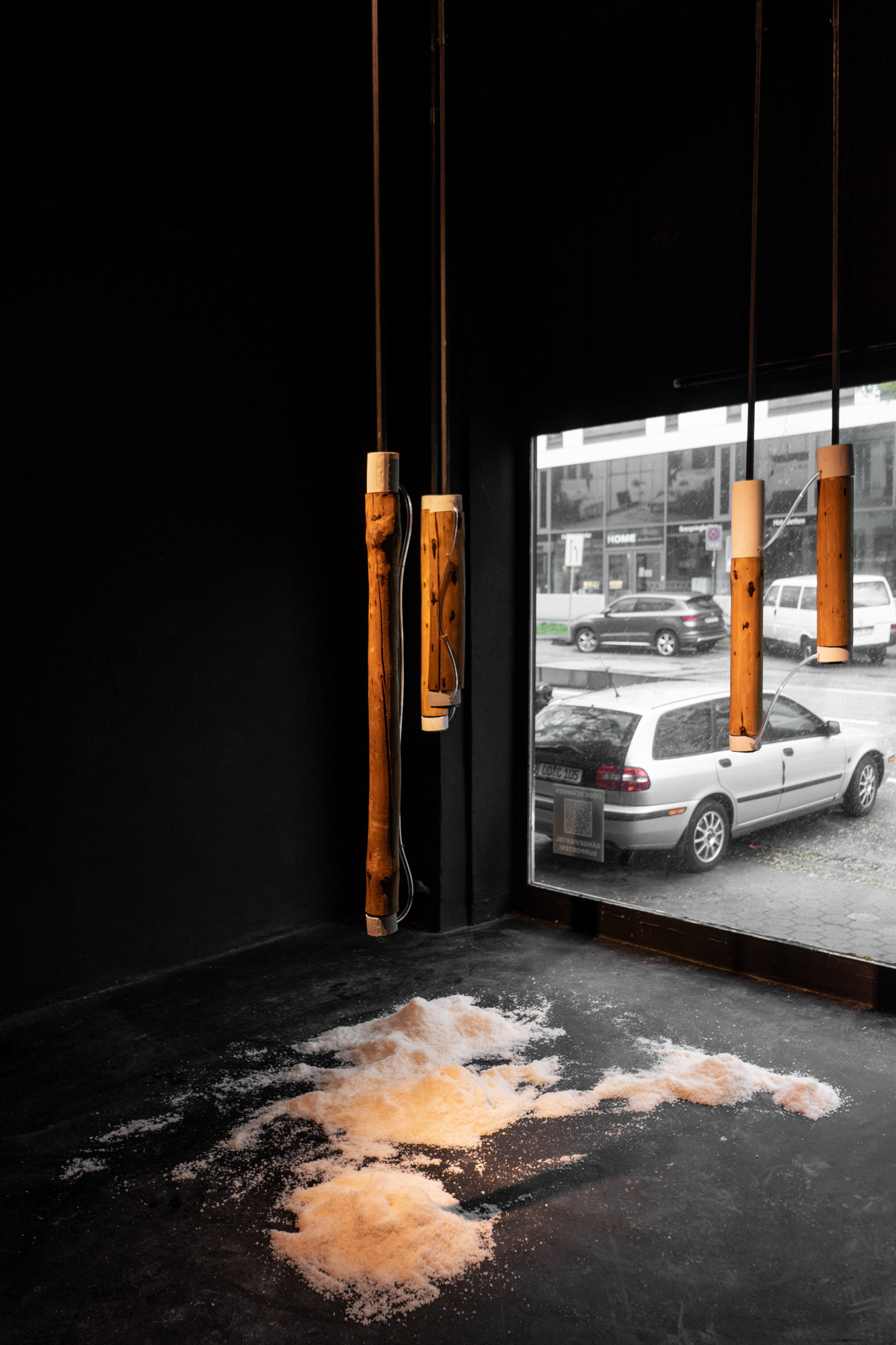Fata Morgana
Mai 2021
performance & exhibition
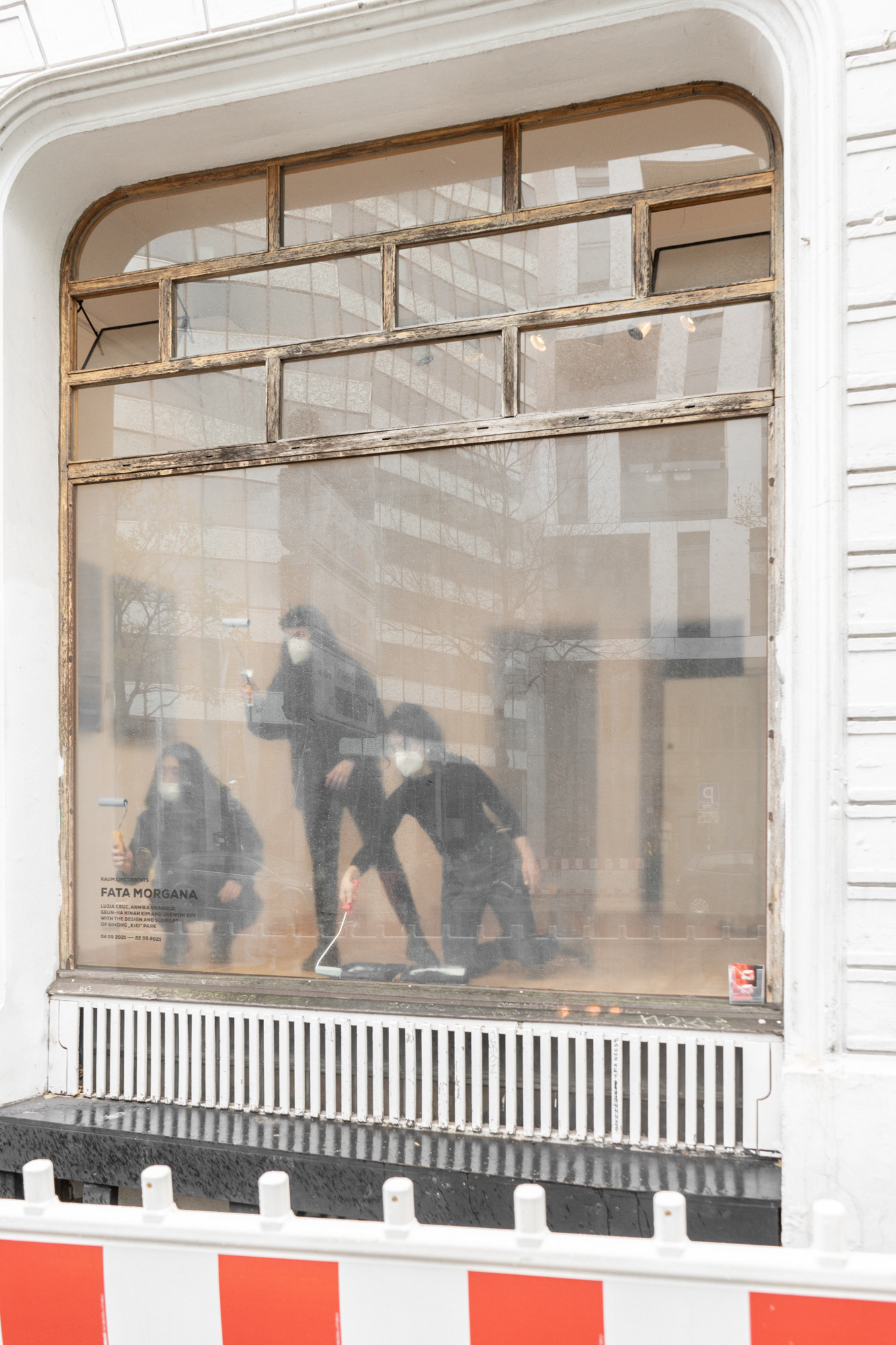

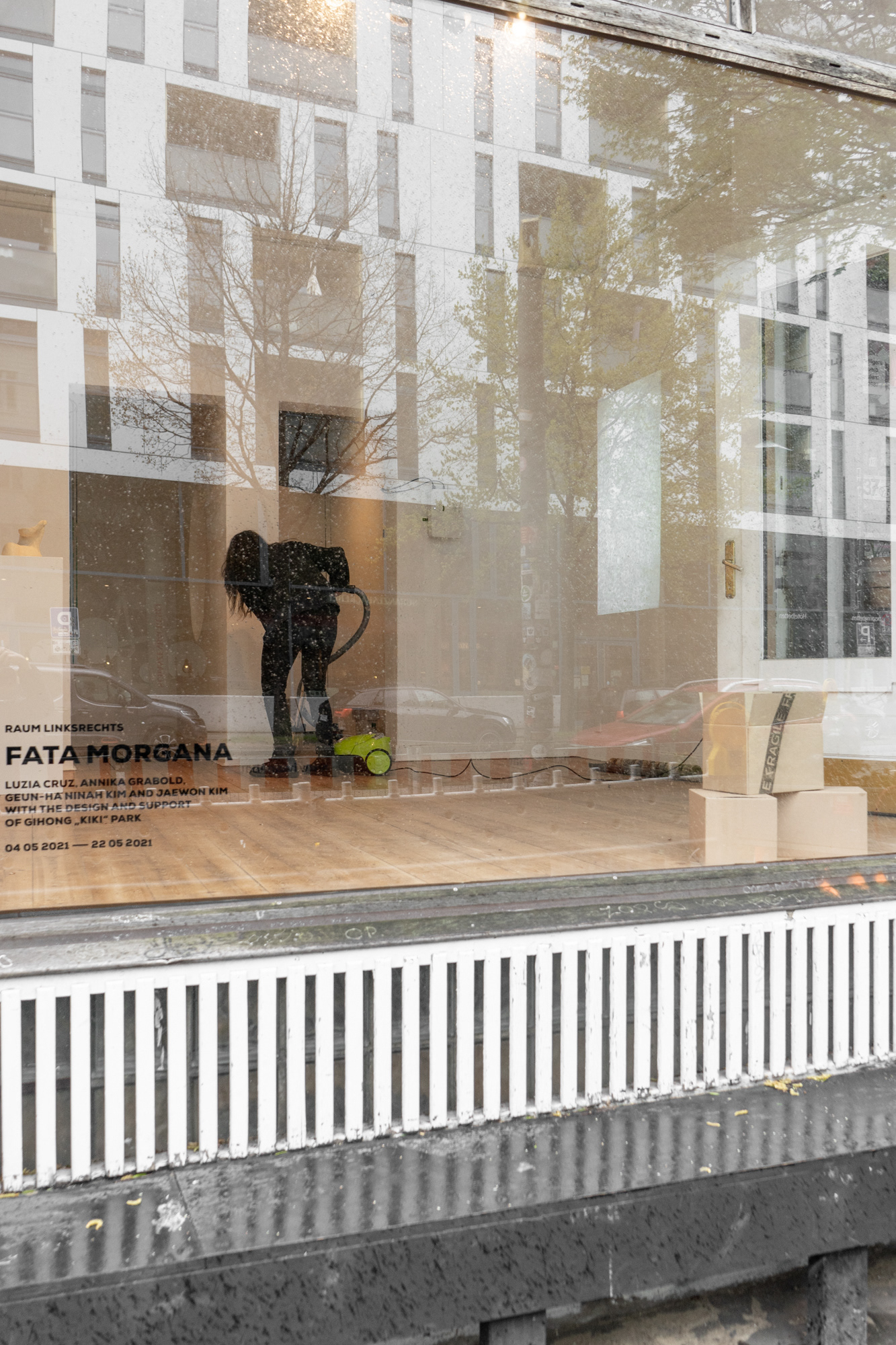
After several postponements of the exhibition "fata morgana" due to pandemic, we, the participating artists, decided to let the exhibition take place - despite the risk of not being able to open the exhibition spaces.
When it became clear shortly before the opening that we would not be able to open the gallery, we decided to initiate the exhibition with a two-day performance. It consisted of informally inviting visitors to participate in the construction and installation of the works and to engage in conversation about the current working conditions.
During the performance, it turned out that the pavement in front of the gallery windows would be opened up because of a construction site. Our reaction to this was to seal the windows with buttermilk after the set-up was done, to investigate the question of what happens to an exhibition when it has to remain in its latency.
a beautiful process of fuck ups and failures with: Luzia Carriço Cruz, Jaewon Kim, Geunha Ninah Kim and Annika Grabold
with support of Gihong „Kiki“ Park
with support of Gihong „Kiki“ Park
Thanks to Raum LinksRechts from Gängeviertel e.V.

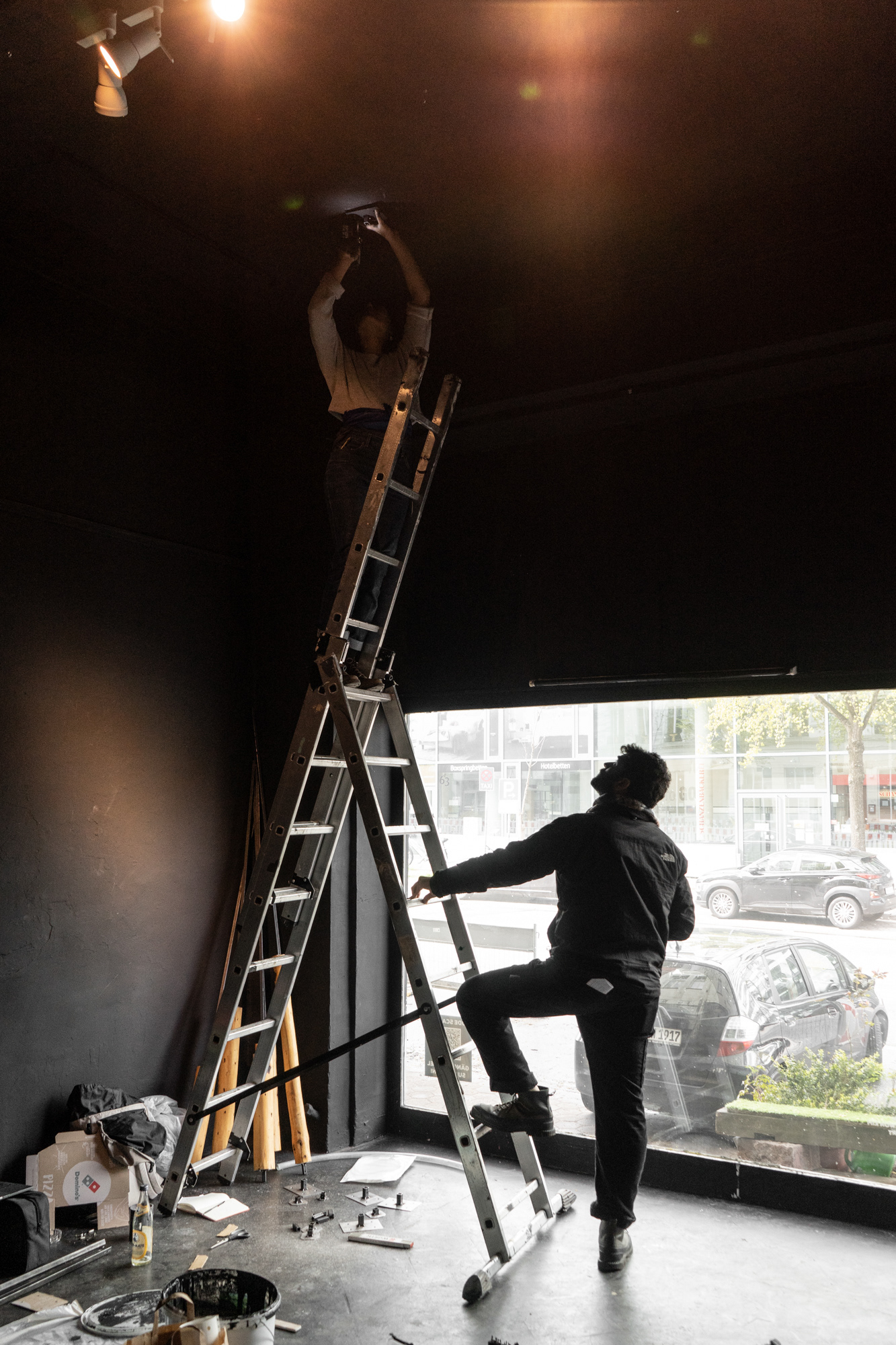

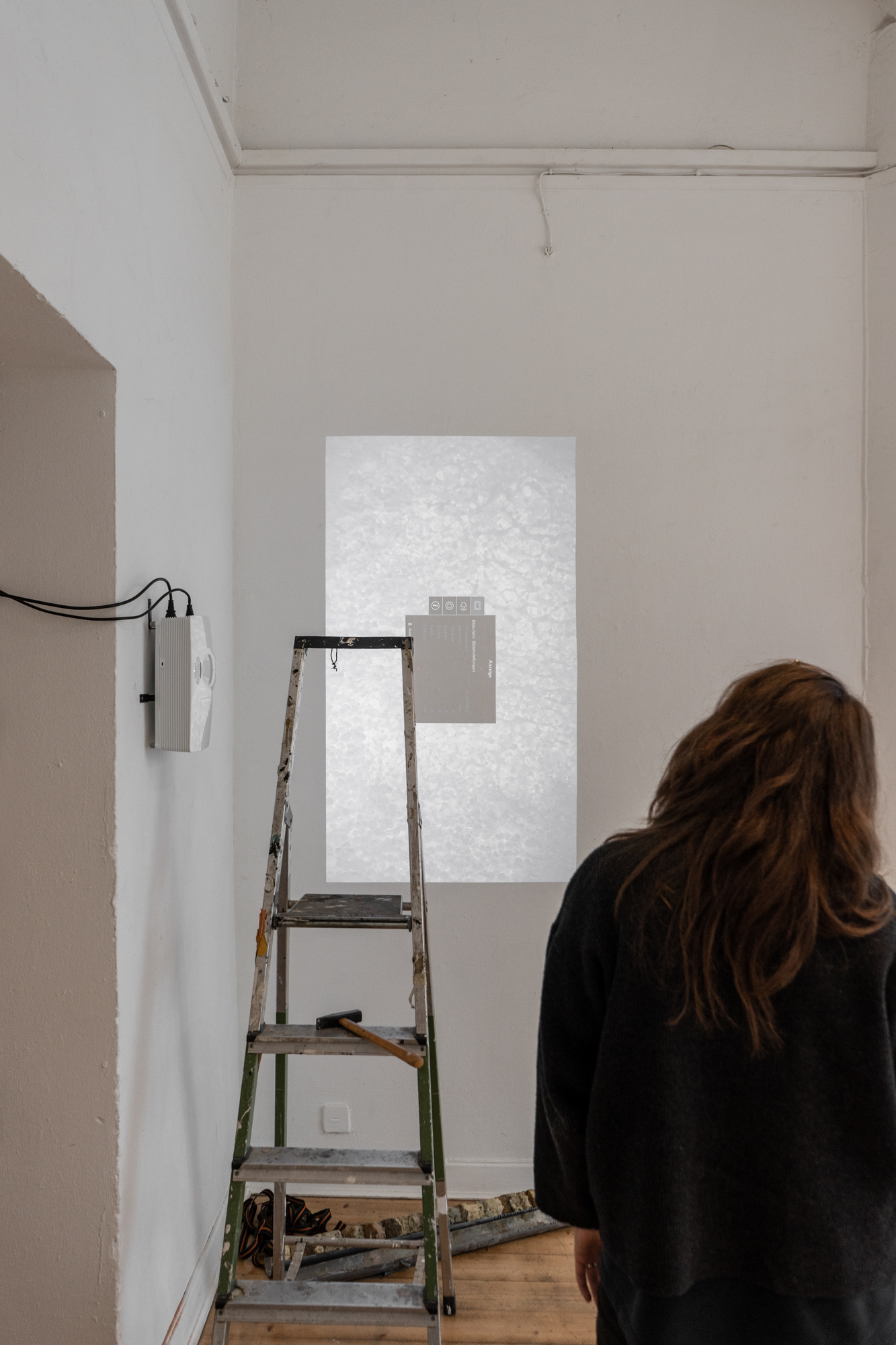


The project takes place on three different stages over a period of 19 days. FATA MORGANA intends to portray a city under construction. It arises from the influence of a moment in motion: a cyclical exodus and the accelerated decay of the city. Here, this image is built in layers surrounding and shaping the bodyobject. There is thus a longing to return to the island, to hear and see from afar the distorted noise and silhouette of the machine.
In the first stage (interior room) a set of objects are brought together revealing a path of displacement. The impossibility of crossing the two rooms of Raum linksrechts draws a frame and questions then the intentionality of exhibiting these (archival) objects. After the journey – the journey back.
From the exterior, (outer room) the two screens of these two rooms are being covered. There is a paradoxical attempt to bring a serene and milky landscape to the busy and empty street. And it suggests the boring novelty of the city: the expectation of an encounter with a utopia, the never seen interior of a building.
Its third format is that of a newspaper (in movement – between rooms), so that can be touched and owned. This document of more organic longevity is a vanity. It documents an accident that never came to an end and still invades the intimate room of the viewer.
The invisible progress of the process of owning a castle is simulated.
In the first stage (interior room) a set of objects are brought together revealing a path of displacement. The impossibility of crossing the two rooms of Raum linksrechts draws a frame and questions then the intentionality of exhibiting these (archival) objects. After the journey – the journey back.
From the exterior, (outer room) the two screens of these two rooms are being covered. There is a paradoxical attempt to bring a serene and milky landscape to the busy and empty street. And it suggests the boring novelty of the city: the expectation of an encounter with a utopia, the never seen interior of a building.
Its third format is that of a newspaper (in movement – between rooms), so that can be touched and owned. This document of more organic longevity is a vanity. It documents an accident that never came to an end and still invades the intimate room of the viewer.
The invisible progress of the process of owning a castle is simulated.
Text by Luzia Cruz
